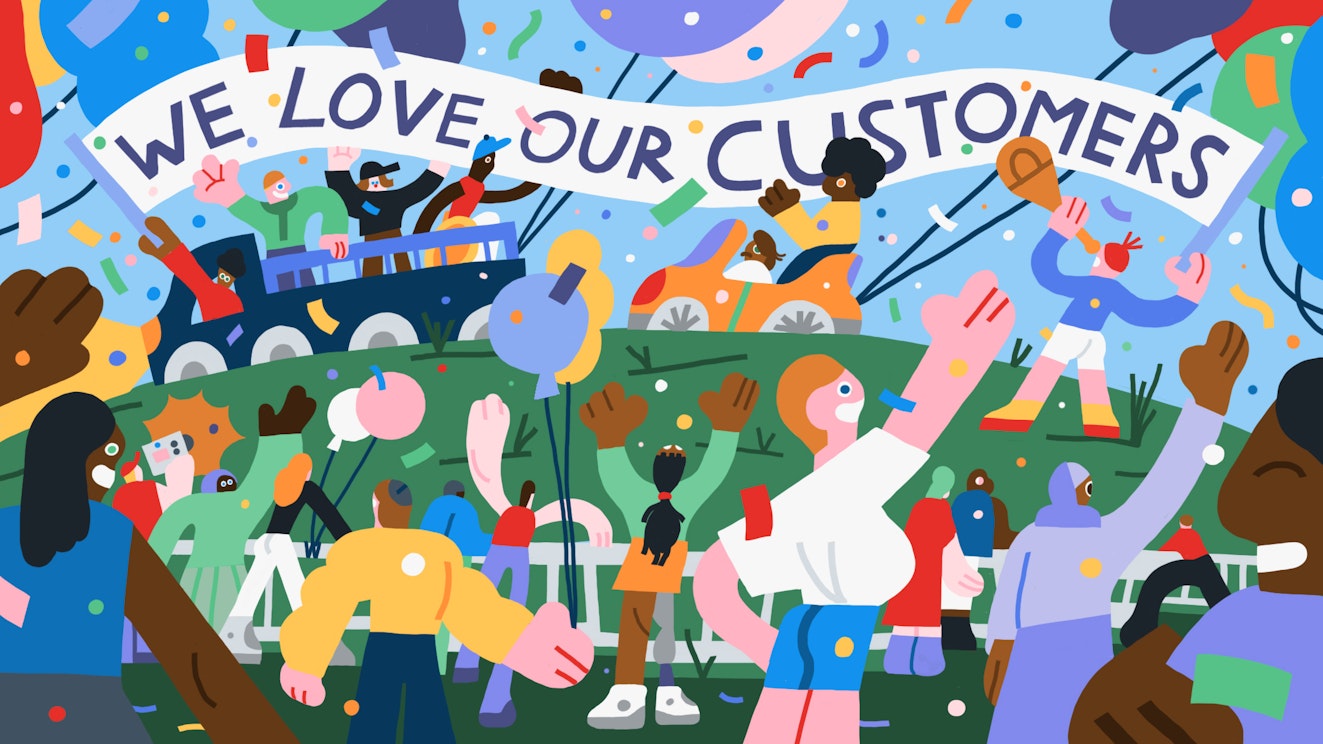Marketing is often focused heavily (or even solely) on generating new leads and customers, but it’s important not to overlook your existing customers when creating your marketing strategies.
Lincoln Murphy sums up the value that existing customers offer to growing SaaS companies: “The majority of the revenue from your relationship with a customer happens post-sale. The emphasis is on both keeping the customer longer and also expanding the relationship.”
So how can marketing teams create content and messaging to improve customer success and drive retention? In this post, we’re sharing some great examples of customer success marketing — marketing activities and features specifically designed to help existing customers be successful with your product.
What is customer success marketing?
Customer success marketing is a marketing strategy that's designed to support the customer success function, to drive retention instead of acquisition. It’s also called customer marketing or retention marketing, and it focuses on creating content and communications for your existing customers rather than new prospects.
Customer success marketing uses many common marketing tactics (like content, social media, and email) to engage customers and enable their ongoing success with the product. Common elements of customer success marketing include:
Onboarding materials
Product communications, updates, and highlights
Case studies
Customer events
Customer enablement materials
5 great examples of customer success marketing
The five examples below show how companies can improve customer success, even without a dedicated customer success marketing team.
1. Mailchimp 101 from Mailchimp
Mailchimp 101 is a fantastic example of marketing content designed to make Mailchimp’s customers successful with their product. You might think the content on this page would be found in the site’s help center, but it’s actually in the resources section of Mailchimp’s marketing site.
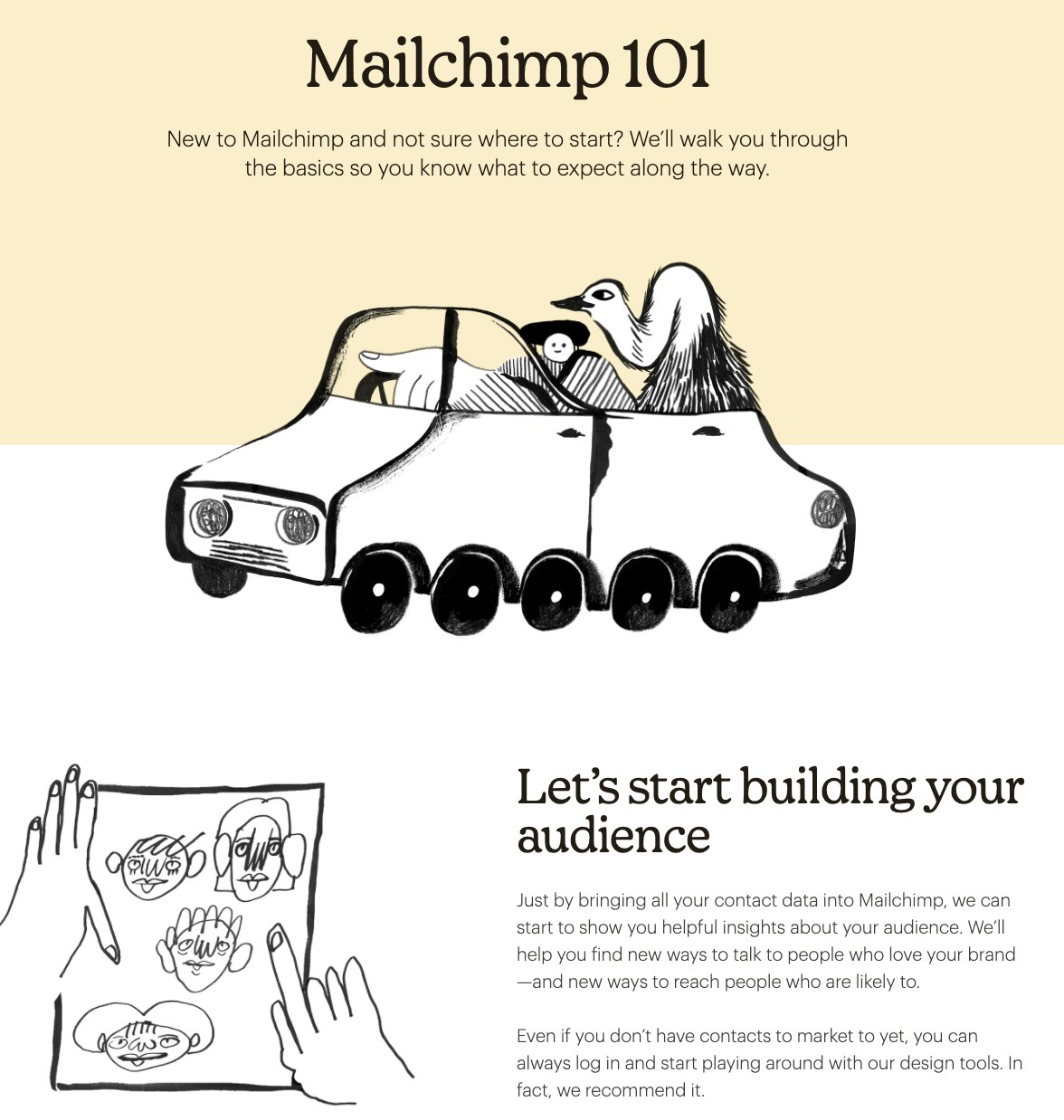
Mailchimp 101 shows a real understanding of the customer journey, the customer onboarding process, and the steps new users need to take to start using the product successfully.
It includes links to different help center articles to allow the reader to learn about topics in more detail, which shows the depth of product and user knowledge that went into putting this resource together. It's also prominently linked to in Mailchimp's site navigation, making it easy to find.
Since Mailchimp is free to start using, new customers can sign up and begin using the product quickly and easily, and it’s incredibly helpful to have this resource in an easy-to-find location on the marketing website, which new users are likely to browse.
This is a great example of how to use website content to support customer success. This page is perfectly designed to support customers right at the start of their user journey in the activation and adoption phase.
If you’re looking to build out similar website content to support customer success, it might be worth reviewing your existing onboarding materials. Could any of this be repurposed to use on your marketing site, similar to what Mailchimp has done?
2. Templates from Airtable
Airtable Templates is another great example of customer success marketing. There are a lot of templates here, so it is clearly a long-term investment for the Airtable marketing team.
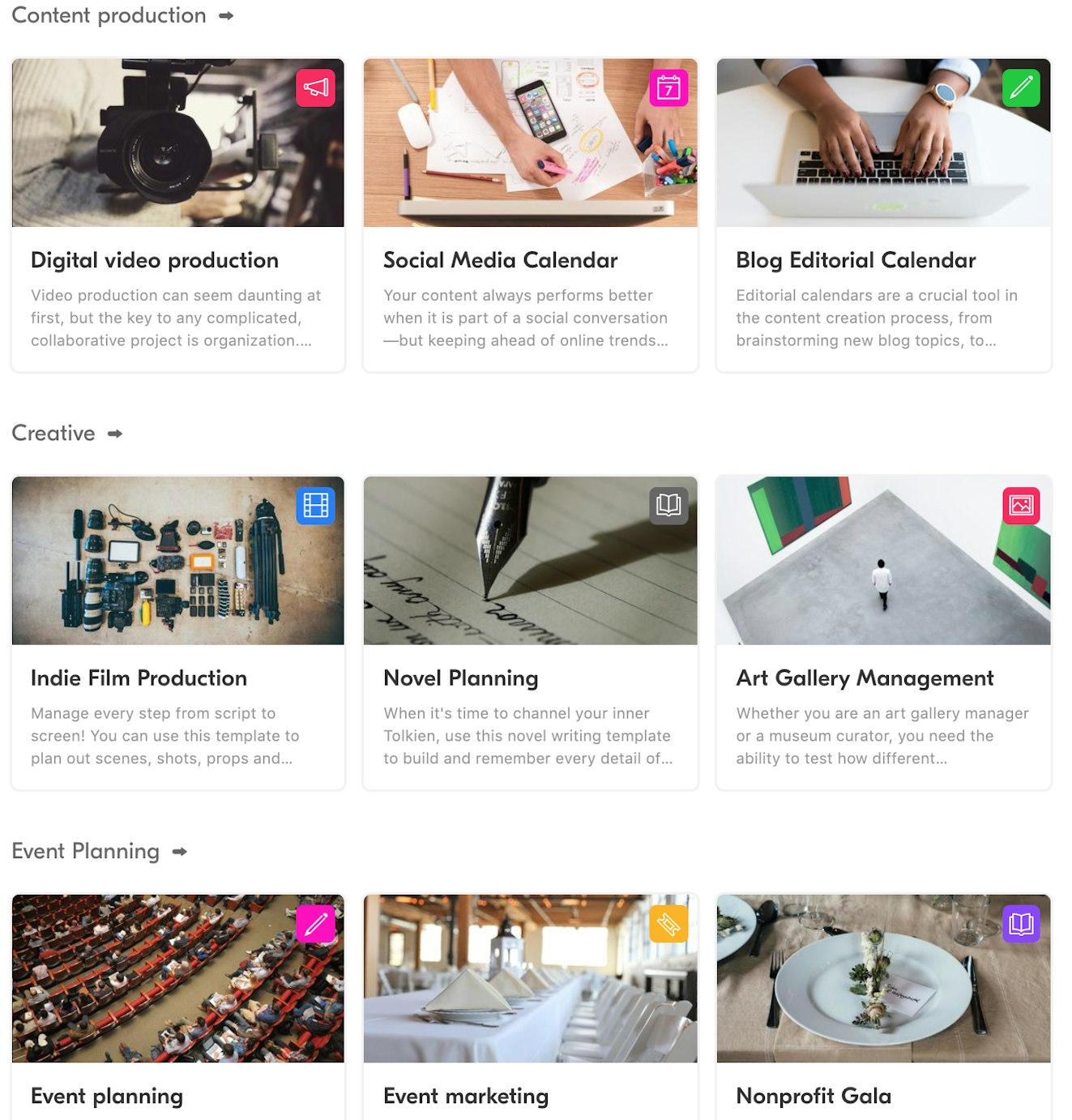
Each template links to a page that explains why the template is useful and includes an embedded Airtable base and a link to use the template.
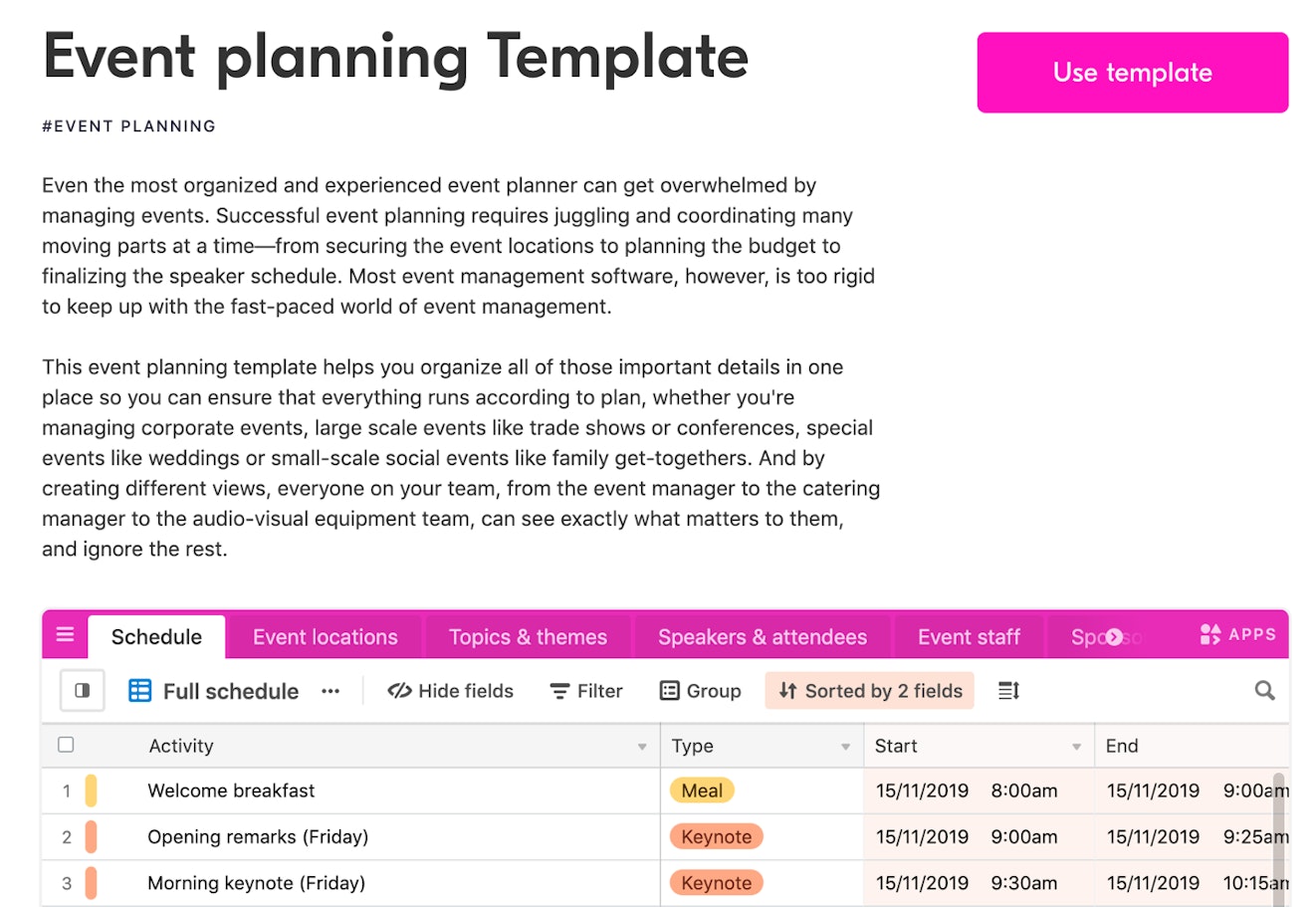
Airtable’s templates have two clear benefits:
The template library is easy for existing customers to browse and start using templates that are relevant to their needs.
The template subpage is optimized to rank well in search (the template above was on page one of the search results for "event planning template"), which suggests these pages are good for attracting new leads and encouraging people to try out Airtable.
This is a great example of how your website content can work for both audiences, supporting existing customers as well as attracting new prospects.
The templates are sorted into different categories, likely aligning with Airtable’s most common customer types and use cases, making it easy for customers to find templates relevant to their company’s needs and project types. As customers browse, they’re likely to find many more helpful templates, enabling them to take full advantage of Airtable’s resources.
While something like this won’t be right for every SaaS company, if you offer a freemium product that’s easy for new customers to begin using quickly and easily, it may be worth adding example dashboards, templates, or use cases more prominently on your website to inspire your customers and help them start using your product.
3. Content marketing strategy by Ahrefs
The Ahrefs team has made customer success marketing the cornerstone of their content marketing strategy. This is how they describe their strategy (emphasis added):
“At Ahrefs, our content marketing strategy is simple and effective: we create in-depth blog articles and YouTube videos that teach potential and existing customers how to solve problems and grow website traffic using our tools.”
This is a great example of product-led content, which content marketing editor Fio Dossetto defines as “content where a product is woven into the narrative and actively used to illustrate a point, solve a problem, and/or help accomplish a goal.”
Product-led content marketing sits right in the middle of content marketing, product development, and customer success. It’s a great way for marketing teams to support customer success while balancing customer acquisition goals, as it helps with acquisition, adoption, and retention:
Acquisition: Potential customers see real use cases of the product in action before they make a purchase.
Adoption: New customers will already have a degree of familiarity with the product from seeing it in your content, plus applicable examples to help them start using it.
Retention: Existing customers can find new ways to use the product and continue to get the most out of it.
For example, Ahrefs’s blog post about how to find the keywords your competitors rank for features multiple product screenshots throughout.
One screenshot shows the product dashboard and search settings so you can easily see how to replicate those yourself. Alongside the screenshot, the article explains how to run this search and offers tips to help you succeed:
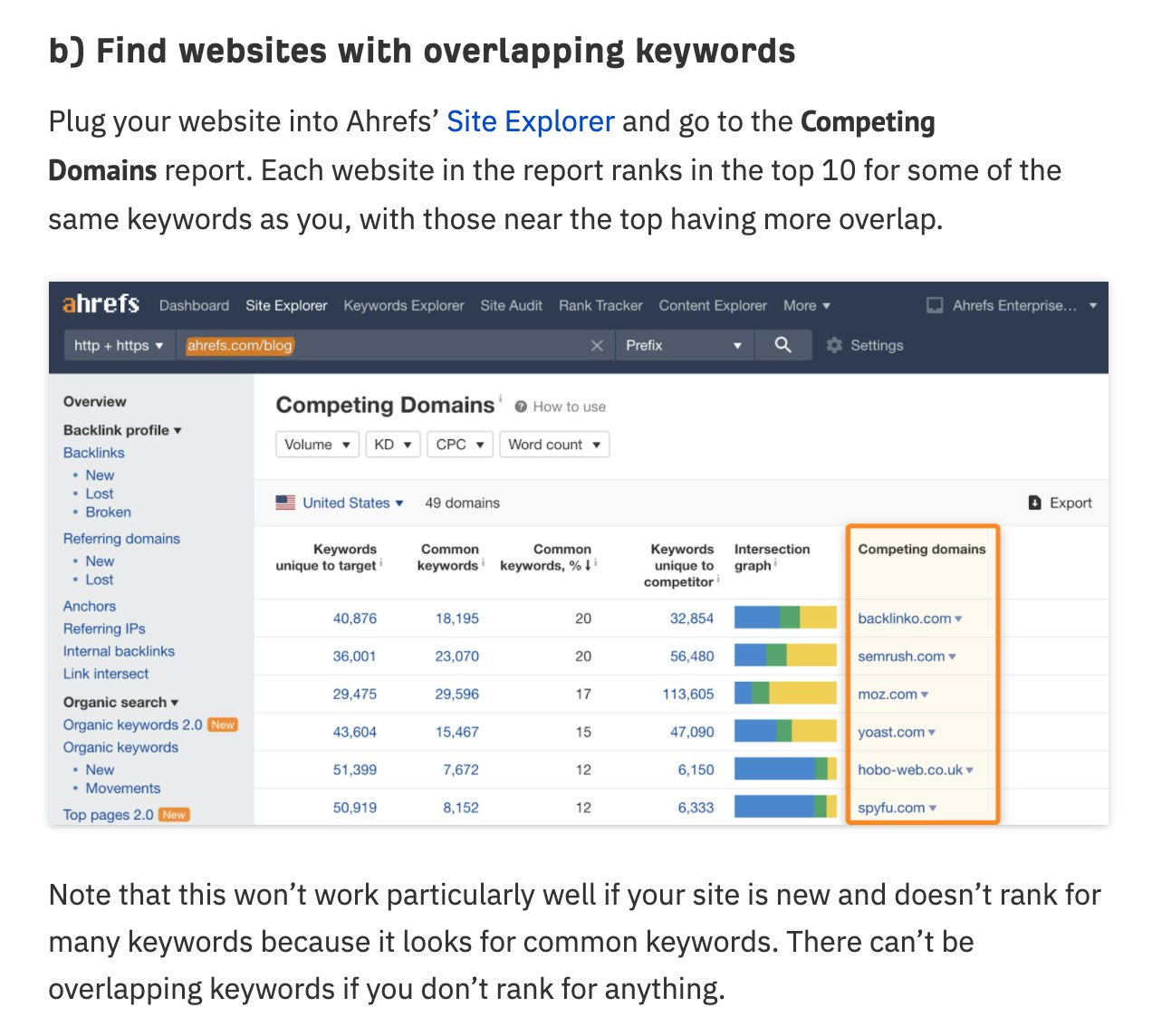
Across all of their content, whether video or written, Ahrefs prominently features screenshots from their product. They’re not just telling you how to achieve your goals using their product — they’re showing you, too.
4. Case studies from Notion
Customer case studies are often areas of collaboration between marketing and customer success teams, but Notion takes that a step further by cleverly bringing their product into their case studies.
Notion not only includes screenshots of their customers’ setups, they link out to product templates that enable others to build something similar to what is seen in the case study:
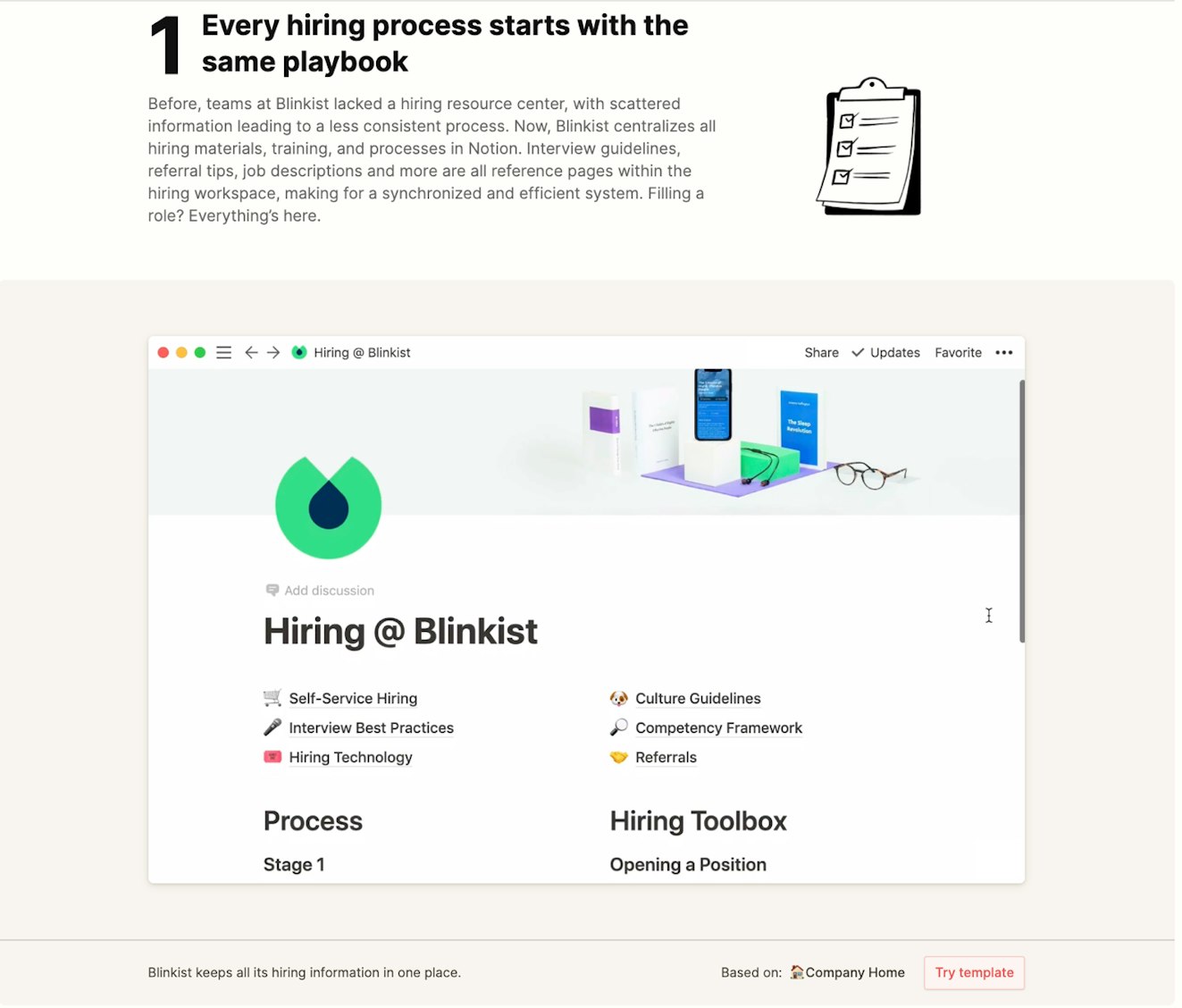
This is another way your marketing team can make one piece of content work for two audiences:
For prospects, this case study is a great showcase of how a recognized company uses Notion.
For existing customers, it offers inspiration for how other companies use the product, plus an easy, one-click way to use that type of template for yourself.
Showing real-life screenshots of your product and adding direct links to either specific features or the product setup in case studies is an often overlooked way to help your existing customers be more successful with your product.
Your case studies and success stories are most likely to highlight your power users and most successful customers, so they are a great way to inspire your existing customers to do more with your product — but only if you can give them the tools to emulate that success.
5. Emails from Stripo
Email marketing is another way your marketing team can support customer success. Your marketing team sends emails to nurture prospects, but do you carry on nurturing customers once they sign up for your product? A drip email campaign can be a great way to keep users engaged with your product.
This Valentine’s Day email from email design builder Stripo is a great example:
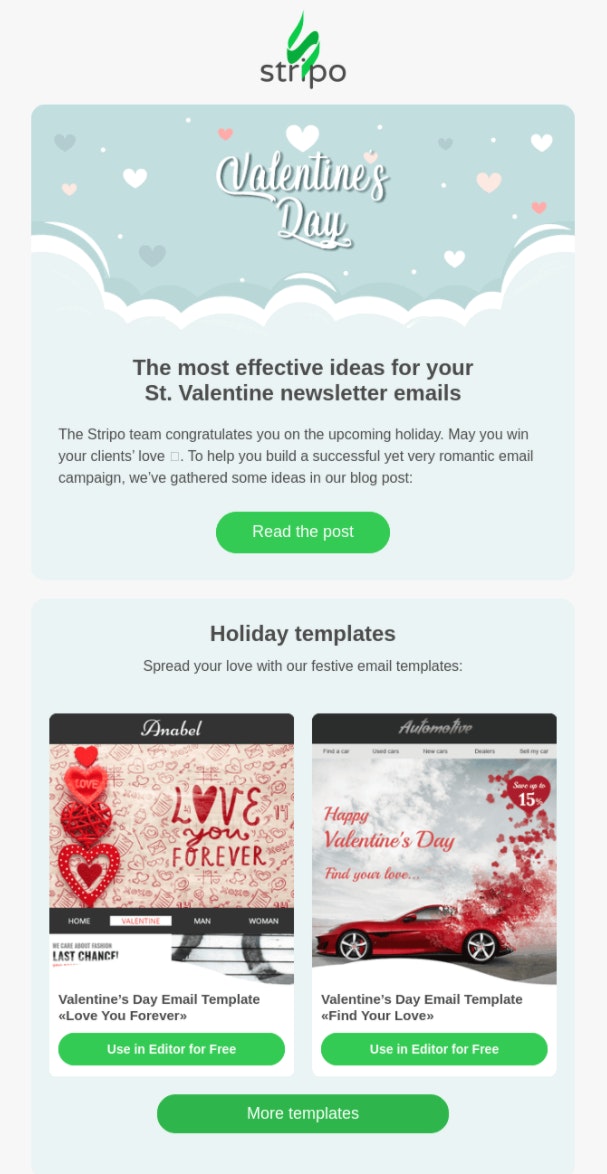
Stripo knew that many of their customers would send email campaigns around Valentine’s Day, so they proactively messaged their customers to help them have extra success using Stripo’s product.
As well as linking to a blog post to give them ideas for their Valentine’s campaign, Stripo includes links to specific email templates customers can use to build their emails, directly showing how their product can help customers with specific messaging.
You don’t need a dedicated customer success marketing team to make a difference
It’s important to continue marketing to your existing customers in order to keep them engaged with your product and help them be more successful when using it. Additionally, helping your customers achieve their goals when using your product is an important source of revenue.
If you’re not already creating content to market to existing customers, you’re missing out. Whether it’s adopting a product-led approach to content marketing or creating a dedicated email campaign for existing customers, there are plenty of ways to adapt your marketing strategies to also cater to your existing customers.


